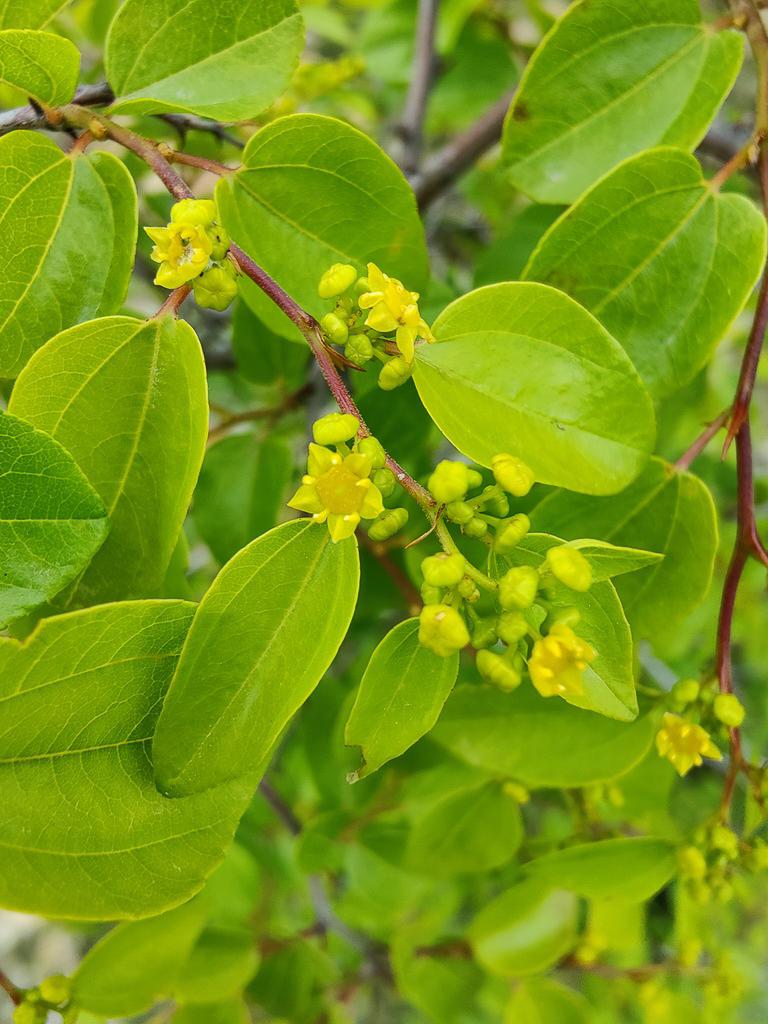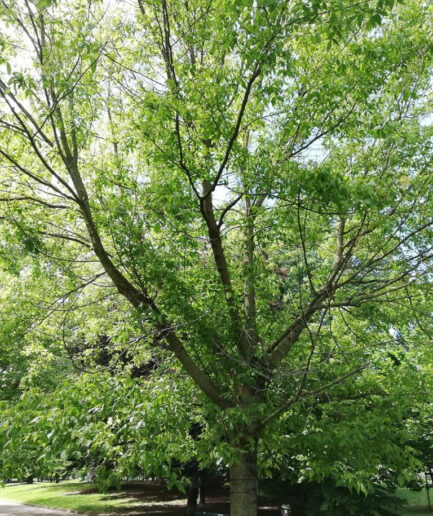Christ’s thorn
Scientific Name: Paliurus spina-christi Miller
Family: Rhamnaceae
MORPHOLOGY
Habit and dimensions: perennial shrub, bushy, with deciduous leaves. Height ranging from 1 to 4 m.
Stem: stem covered by a reddish-brown bark with more or less flexuous flexible branches bearing sharp thorns, formed by woody stipules, 5-8 mm long, stiff, very acute, unequal, the longest straight, the shortest curved, while those of recent development show a zig-zag growth.
Leaves: alternate leaves shortly petiolate, oval or ovate-oblong, obtuse or acute, sometimes crenate at the base with entire or slightly dentate margin, glabrous, shiny, 20-40 mm long, generally traversed by 3 main veins and other converging secondary veins towards the apex, well visible on the lower surface.
Flowers: very small hermaphrodite flowers, axillary, grouped in corymbose clusters, yellowish in color, with 5-6 minute petals alternating with calyx divisions, broadly conical calyx reversed. Blooms from April to July.
Fruits and seeds: the fruit is a lentil-shaped drupe with a wide membranous circular dry wing about 1 cm, initially green then during maturation it assumes a brownish color, containing a small woody seed in each locule. Ripens in September-October.
DISTRIBUTION AND HABITAT
Present throughout Italy, on sunny slopes along ditches, between 0 and 500 m.
USE
In herbal medicine, the fruits are used in infusion for their diuretic and purifying properties; they contribute to the elimination of uric acids and have interesting hypoglycemic properties. In cosmetics, preparations are obtained for the treatment of oily skin. Before taking any plant-derived product (medicinal or non-medicinal) for therapeutic or similar purposes, it is always advisable to consult a physician. The fruit is edible and has a sour taste, reminiscent of dried apple. Roasted and ground fruits were used as a substitute for coffee.
INTERESTING FACTS
The species name “spina-christi” seems to have a biblical reference, as it is reported: they wove a crown of thorns and placed it on his head during the crucifixion, and it is presumed to have been made from the intertwining of branches of this shrub. In the past, these shrubs formed impenetrable hedges and were used as anti-intrusion systems for farmsteads, country villas, and as barriers, such as natural enclosures for livestock and flocks, thus preventing access to cultivated fields.
Photo: licensed freely by iNaturalist





















